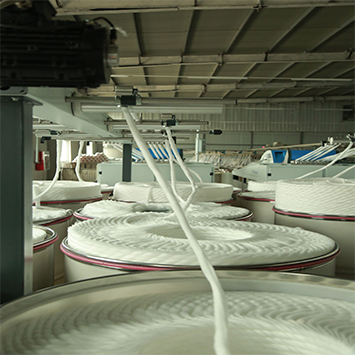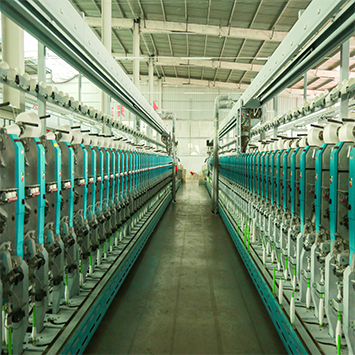Polyester staple fiber (hereinafter referred to as staple fiber) is a type of short fiber obtained by polymerizing PTA and ethylene glycol to produce polyester (PET) in a molten state, followed by spinning, stretching, and cutting. Since it entered China in the 1970s, it has rapidly developed into a key raw material for the textile, clothing, and home textile industries due to its wide applications and low cost.
Staple fibers can be categorized into different types based on various classification standards. According to the raw materials, staple fibers can be divided into virgin staple fibers and recycled staple fibers. Virgin staple fibers are made from PTA and ethylene glycol through polymerization, spinning, and cutting, commonly known as "big chemical fiber". Recycled staple fibers mainly use recycled PET bottles and other materials. They are obtained through drying, melting, spinning, and cutting, commonly known as "small chemical fiber".
Virgin staple fibers can be further categorized based on spinning production processes into two types: melt direct spinning and batch spinning. Melt direct spinning staple fibers are produced by using PTA and ethylene glycol as raw materials to generate polyester melt, which is then directly spun and cut into staple fibers without the polyester chip-making process. Currently, the production of conventional staple fiber varieties in China primarily uses melt direct spinning technology. Batch spinning, also known as chip spinning, uses PET chips as raw materials to produce fibers. Compared to melt direct spinning, batch spinning reduces the polyester units and adds drying and melting units for the chips, while the subsequent procedures are largely the same.

In general, polyester staple fibers on the market can be divided into three types: large chemical fiber, medium chemical fiber, and small chemical fiber.
Large chemical fiber: Staple fibers spun either from PET chips or through melt direct spinning. They have good color, large batch sizes, stable strength, fewer defects, and good spinnability.
Medium chemical fiber: Produced using downgraded PET chips or combined with PET recycled materials. The price and quality fall between large chemical fiber and small chemical fiber (mainly used by some spinning mills to mix with large chemical fibers to enhance competitiveness).
Small chemical fiber: Spun using PET recycled materials. The price and quality vary widely, suitable for export to markets and fields with lower quality requirements (e.g., fill materials, etc.).
Typically, fibers spun from chips have virtually no defects. These fibers are uniform in thickness, smooth on the surface, and feel relatively soft (however, for different uses of staple fiber, whether they are siliconized or non-siliconized is a distinguishing factor). When pulled by hand, chip-spun fibers generally have better strength, larger batch sizes, no color variation, and uniform physical properties.
Generally, small chemical fibers produced, or those fibers made from recycled materials, have smaller batch sizes, and their touch is not as good as that of large chemical fibers (except those processed). They have more defects, occasional uneven thickness, and longer excessive lengths generally exist objectively. The physical properties of conventional recycled materials are slightly inferior (e.g., strength, etc.).

Based on application, staple fibers are mainly classified into three categories: those used for spinning and weaving, filling, and non-woven applications. Spinning and weaving are the most common uses of staple fiber, including both cotton spinning and wool spinning. Cotton spinning and wool spinning refer to fibers spun with cotton-type and wool-type fibers, respectively. Cotton spinning applications are more extensive and include pure polyester spinning, polyester-cotton blends, polyester-viscose blends, and producing polyester staple fiber sewing threads. Wool spinning mainly includes polyester-acrylic, polyester-wool blends, and making blankets.
Filling mainly involves the use of staple fibers as filling materials for home furnishings and clothing for warmth, such as beddings, cotton clothes, sofa furniture, plush toys, etc. These staple fibers are often hollow polyester staple fibers. Non-woven is an extension of staple fiber applications, which has developed rapidly in recent years. Non-woven fabrics are widely used, such as spunlace non-woven fabrics mainly used in wet wipes and medical fields, and geotextiles, leather base fabrics, and felt base fabrics primarily used in engineering fields.
Currently, the largest market share is held by virgin spinning polyester staple fiber products.